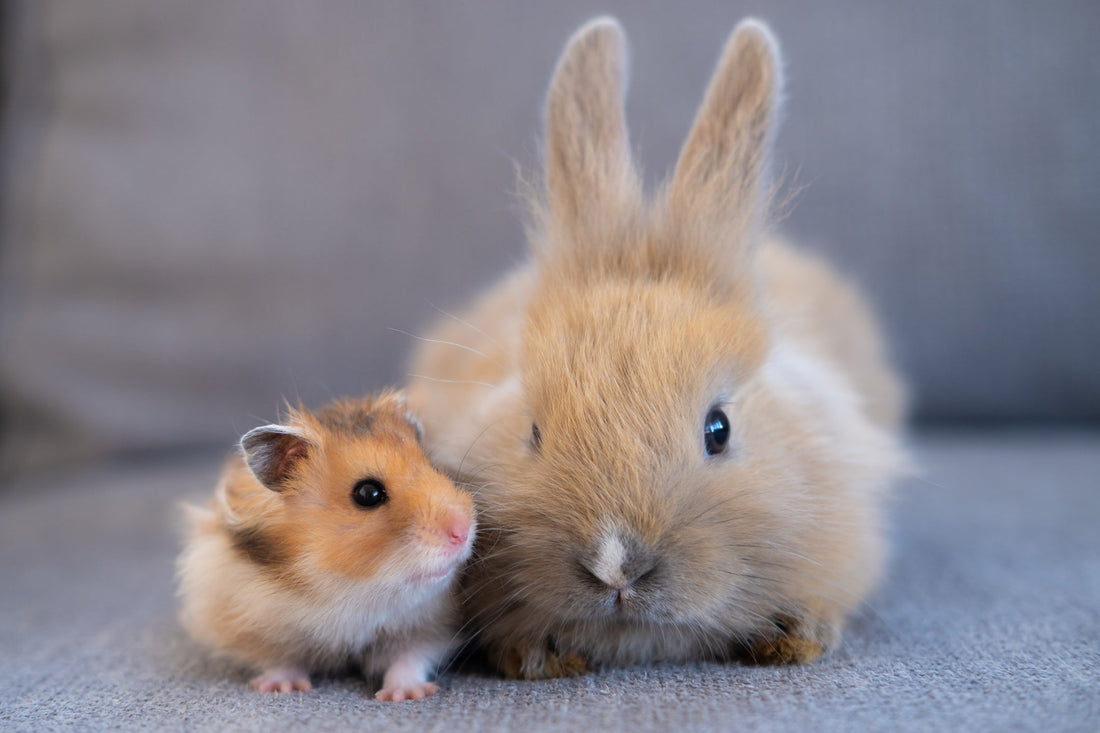
If you’ve ever watched your hamster scurrying around, you’ll know how much they love to chew, burrow, and build cosy nests. While hay is often linked to guinea pigs and rabbits, it can also play an important role in your hamster’s health and happiness.
So, can hamsters eat Timothy hay? And if so, how much do they need? In this complete guide, we’ll cover everything you should know about Timothy hay for hamsters — from its benefits and uses to the best way to introduce it safely.
Can Hamsters Eat Timothy Hay?
Yes — hamsters can safely eat Timothy hay, and it’s actually a wonderful addition to their cage setup.
Unlike guinea pigs, hamsters don’t rely on hay as a main food source, but it provides excellent enrichment, nesting material, and digestive support.
In short: Timothy hay isn’t a dietary necessity for hamsters, but it’s a great bonus for their overall well-being.
What Is Timothy Hay?
Timothy hay is a type of grass hay harvested from the Timothy plant (Phleum pratense). It’s high in fibre, aromatic, and full of texture — making it perfect for small pets.
It comes in different cuts, which vary in texture and nutritional balance:
- First Cut: Coarse, fibrous, and great for chewing and nest-building.
- Second Cut: A balanced blend — soft but still textured, ideal for comfort and mild nibbling.
- Third Cut: Softer and leafier — perfect for nesting or hamsters who love a snug, comfy bedding.

Why Is Timothy Hay Good for Hamsters?
Even though hamsters don’t need hay for nutrition, it provides many benefits that make their lives more comfortable and natural.
1. Great for Digestion
Timothy hay adds a touch of fibre to your hamster’s diet, helping maintain healthy digestion and preventing constipation. It’s especially useful for dwarf hamsters that can be prone to digestive issues.
2. Natural Chew Toy
Hamsters’ teeth grow continuously, and they need to gnaw to keep them short. Chewing on Timothy hay helps wear down teeth naturally, preventing overgrowth and discomfort.
3. Perfect for Nesting and Burrowing
Soft, dry hay gives hamsters the perfect material for building nests and tunnels. It keeps their environment warm, cosy, and engaging — mimicking the natural burrows they’d create in the wild.
4. Encourages Foraging Behaviour
Sprinkling Timothy hay in their cage encourages natural foraging instincts. You can even hide treats or pellets within it to make snack time more fun and enriching.
5. Adds a Natural Scent and Texture
Hay smells fresh and earthy, helping to create a more natural environment for your hamster. It also gives them something interesting to explore, dig through, and rearrange.
How to Use Timothy Hay in Your Hamster’s Cage
You can use Timothy hay in several ways to improve your hamster’s daily routine:
- Bedding Layer: Mix hay with paper or wood-based bedding to add softness and warmth.
- Nesting Material: Place handfuls of hay in corners or hideouts for your hamster to use in their nest.
- Foraging Fun: Scatter hay around the cage or fill toys with it for digging and chewing.
- Chew Enrichment: Offer small hay bundles or hay cubes for natural gnawing.
Always choose fresh, green, and dust-free hay to prevent respiratory irritation. Avoid hay that smells musty or looks dull and brown.
How Much Timothy Hay Can Hamsters Have?
Timothy hay should be offered in moderation — think of it as an accessory rather than a staple. A small handful once or twice a week is enough for most hamsters.
- Syrian hamsters may enjoy chewing on coarser strands or burrowing through it.
- Dwarf hamsters prefer softer cuts like second or third cut for nesting.
Keep an eye on how much your hamster uses or chews, and remove any soiled or damp hay daily to keep the cage fresh.
Is Timothy Hay Safe for All Hamsters?
Yes, Timothy hay is safe for all hamster species — including Syrian, Roborovski, Campbell’s, and Winter White hamsters.
However, it’s important to:
- Make sure the hay is pesticide-free and unscented.
- Avoid alfalfa hay, which is too rich in calcium and protein for hamsters.
- Replace hay regularly to avoid mould or moisture build-up.
If your hamster shows signs of sneezing, watery eyes, or irritation after introducing hay, remove it — they might be sensitive to dust.
What Type of Timothy Hay Is Best for Hamsters?
Most hamster owners prefer 2nd cut Timothy hay because it offers the perfect balance of texture and comfort.
Can I Use Timothy Hay as Hamster Bedding?
Yes — you can safely use Timothy hay as part of your hamster’s bedding mix, especially alongside paper bedding. It adds softness, warmth, and a natural feel.
Just avoid using hay as the only bedding, since it doesn’t absorb moisture as well as paper or wood shavings.
When Not to Use Hay
Avoid using hay if:
- Your hamster has respiratory issues or allergies.
- The hay is dusty or mouldy.
- You notice any mites or debris in the hay.
Always check the packaging date and store hay in a cool, dry place to maintain freshness.
Final Thoughts: Timothy Hay = Happy Hamster
Timothy hay may not be a nutritional staple for hamsters, but it’s an excellent enrichment material that promotes natural behaviour, comfort, and dental health.
Whether your hamster chews, nests, or tunnels through it, a handful of fresh Timothy hay can make their habitat more stimulating and enjoyable.
So next time you refresh their cage, don’t forget to sprinkle in a bit of hay — your hamster will thank you with happy squeaks and cosy burrows!

